1. Phalen GS. The carpal-tunnel syndrome: clinical evaluation of 598 hands. Clin Orthop Relat Res. 1972; 83:29–40. PMID:
5014825.
2. El Miedany Y, Ashour S, Youssef S, Mehanna A, Meky FA. Clinical diagnosis of carpal tunnel syndrome: old tests-new concepts. Joint Bone Spine. 2008; 75:451–457. PMID:
18455945.

3. Jablecki CK, Andary MT, Floeter MK, Miller RG, Quartly CA, Vennix MJ, et al. Practice parameter: Electrodiagnostic studies in carpal tunnel syndrome. Report of the American Association of Electrodiagnostic Medicine, American Academy of Neurology, and the American Academy of Physical Medicine and Rehabilitation. Neurology. 2002; 58:1589–1592. PMID:
12058083.

4. Buchberger W. Radiologic imaging of the carpal tunnel. Eur J Radiol. 1997; 25:112–117. PMID:
9283839.

5. Buchberger W, Schon G, Strasser K, Jungwirth W. High-resolution ultrasonography of the carpal tunnel. J Ultrasound Med. 1991; 10:531–537. PMID:
1942218.

6. Buchberger W, Judmaier W, Birbamer G, Lener M, Schmidauer C. Carpal tunnel syndrome: diagnosis with high-resolution sonography. AJR Am J Roentgenol. 1992; 159:793–798. PMID:
1529845.

7. Choi WK, Kang YK, Kim YH, Park EM. Diagnosis of carpal tunnel syndrome by diagnostic ultrasound. J Korean Acad Rehabil Med. 2001; 25:134–139.
8. Kim MS, Yoon SY, Lee SO, Lee YG. The abnormal ultrasonographic findings of carpal tunnel in carpal tunnel syndrome. J Korean Acad Rehabil Med. 2003; 27:735–739.
9. Duncan I, Sullivan P, Lomas F. Sonography in the diagnosis of carpal tunnel syndrome. AJR Am J Roentgenol. 1999; 173:681–684. PMID:
10470903.

10. Lee D, van Holsbeeck MT, Janevski PK, Ganos DL, Ditmars DM, Darian VB. Diagnosis of carpal tunnel syndrome: ultrasound versus electromyography. Radiol Clin North Am. 1999; 37:859–872. PMID:
10442084.
11. Park GY, Bae JH, Lee SY, Oh JS, Lim JG, Son DG. Ultrasonographic findings of mild and very mild carpal tunnel syndrome. J Korean Acad Rehabil Med. 2008; 32:67–72.
12. Hobson-Webb LD, Massey JM, Juel VC, Sanders DB. The ultrasonographic wrist-to-forearm median nerve area ratio in carpal tunnel syndrome. Clin Neurophysiol. 2008; 119:1353–1357. PMID:
18387336.

13. Wong SM, Griffith JF, Hui AC, Lo SK, Fu M, Wong KS. Carpal tunnel syndrome: diagnostic usefulness of sonography. Radiology. 2004; 232:93–99. PMID:
15155897.

14. Keberle M, Jenett M, Kenn W, Reiners K, Peter M, Haerten R, et al. Technical advances in ultrasound and MR imaging of carpal tunnel syndrome. Eur Radiol. 2000; 10:1043–1050. PMID:
11003395.

15. Kim HJ, Lee BN. Correlation of ultrasonography with the nerve conduction study in carpal tunnel syndrome of Koreans. J Korean Assoc EMG Electrodiagn Med. 2006; 8:21–25.
16. Lee SJ, Kim JS, Choi YR, Kim SJ, Kang HJ. Relationship between change of median nerve cross-sectional area measured by ultrasonography and prognosis after carpal tunnel release. J Korean Orthop Assoc. 2013; 48:290–296.

17. Johnson EW, Melvin JL. Sensory conduction studies of median and ulnar nerves. Arch Phys Med Rehabil. 1967; 48:25–30. PMID:
6016563.
18. Melvin JL, Schuchmann JA, Lanese RR. Diagnostic specificity of motor and sensory nerve conduction variables in the carpal tunnel syndrome. Arch Phys Med Rehabil. 1973; 54:69–74. PMID:
4692637.
19. Johnson EW, Kukla RD, Wongsam PE, Piedmont A. Sensory latencies to the ring finger: normal values and relation to carpal tunnel syndrome. Arch Phys Med Rehabil. 1981; 62:206–208. PMID:
7235908.
20. American Association of Electrodiagnostic Medicine, American Academy of Neurology, and American Academy of Physical Medicine and Rehabilitation. Practice parameter for electrodiagnostic studies in carpal tunnel syndrome: summary statement. Muscle Nerve. 2002; 25:918–922. PMID:
12115985.
21. Akelman E, Weiss AP. Carpal tunnel syndrome. Etiology and endoscopic treatment. Orthop Clin North Am. 1995; 26:769–778. PMID:
7566922.
22. Omer GE Jr. Median nerve compression at the wrist. Hand Clin. 1992; 8:317–324. PMID:
1613039.

23. Cartwright MS, Shin HW, Walker FO. Ultrasonographic characteristics of the normal median nerve. Neurology. 2006; 66(Suppl 2):A83.

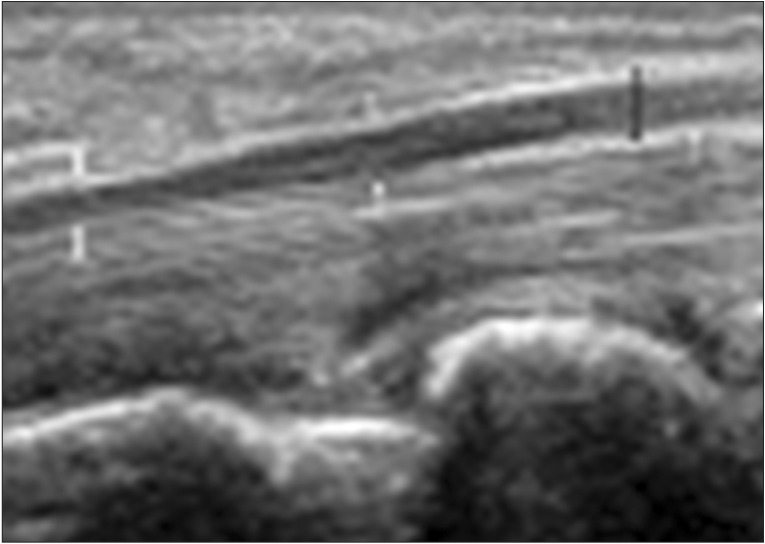
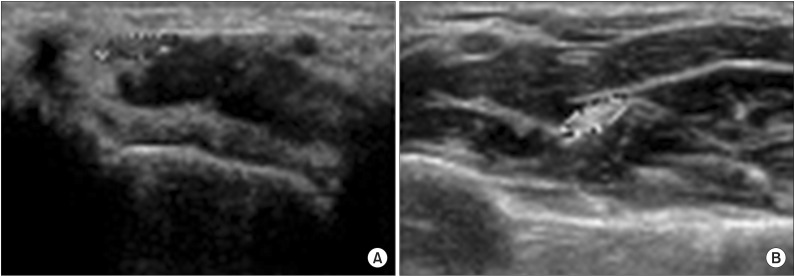
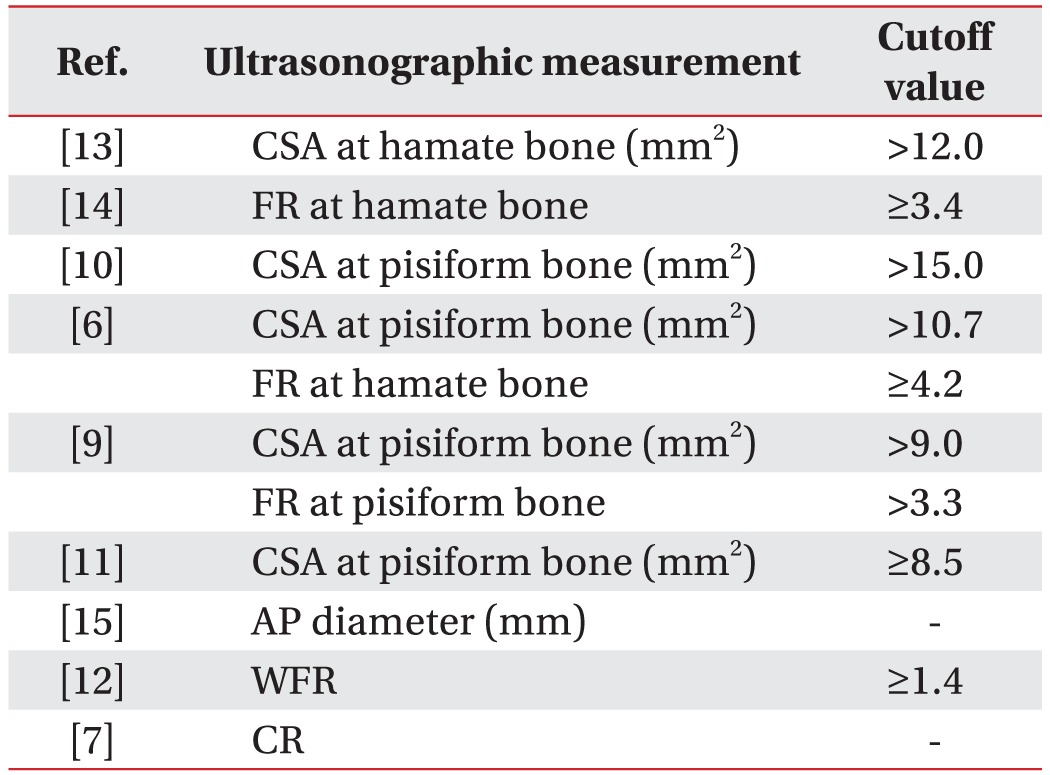
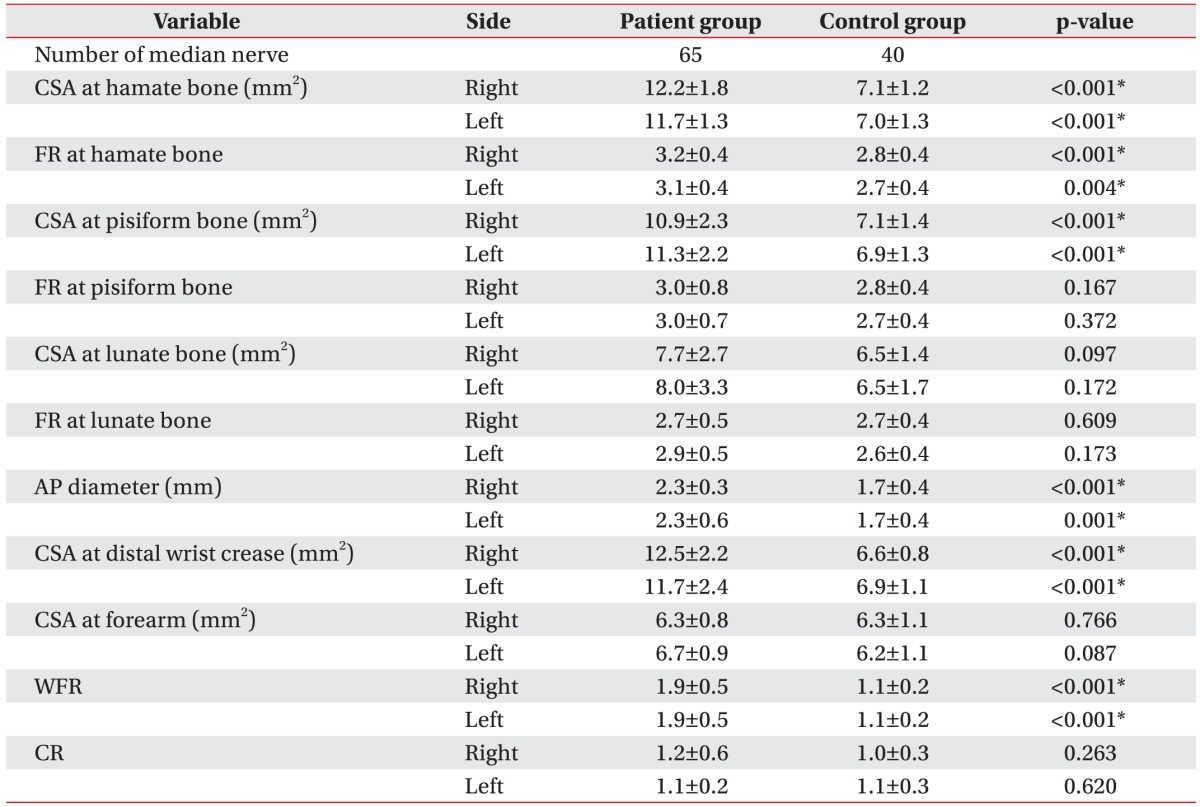




 PDF
PDF ePub
ePub Citation
Citation Print
Print



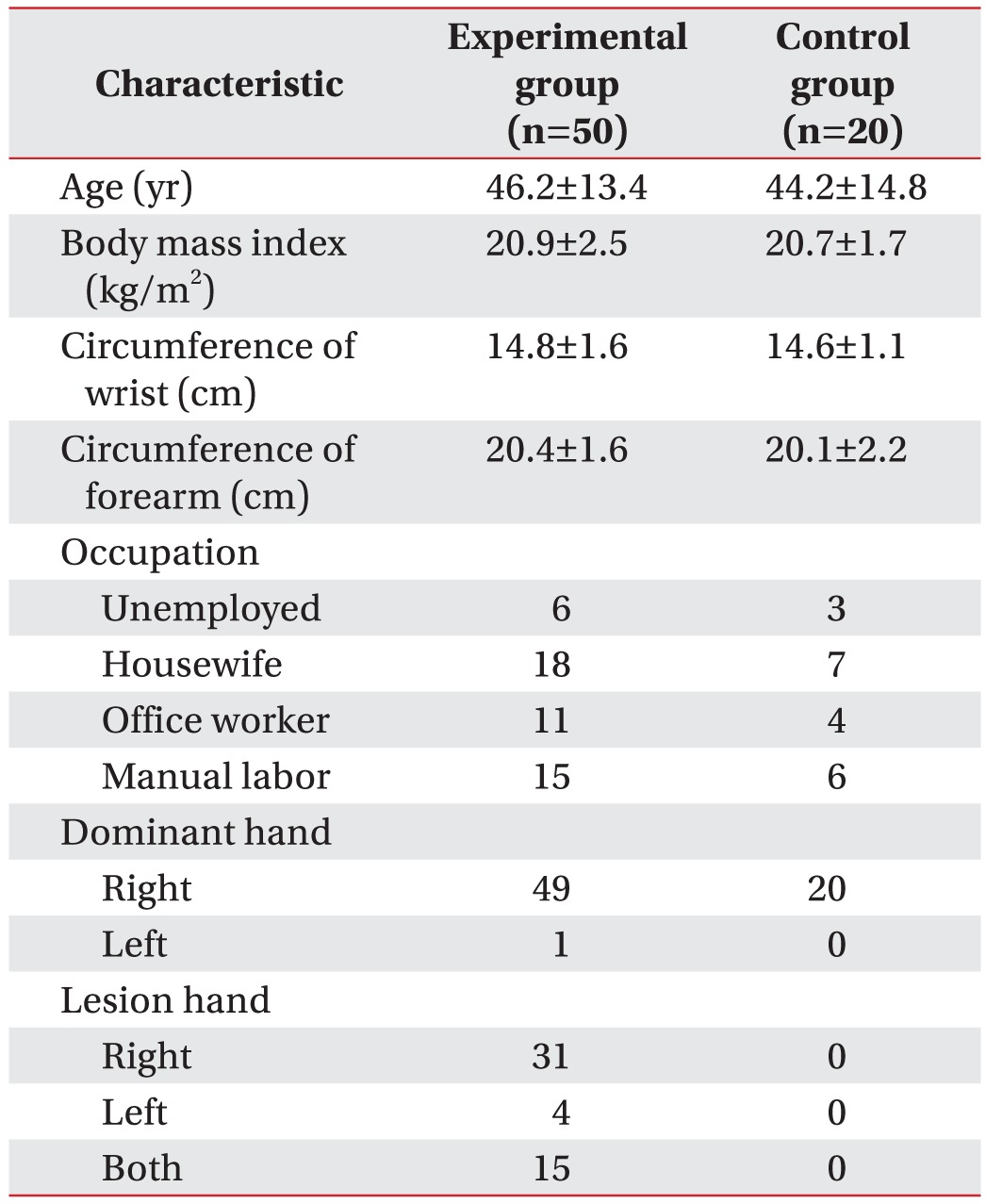
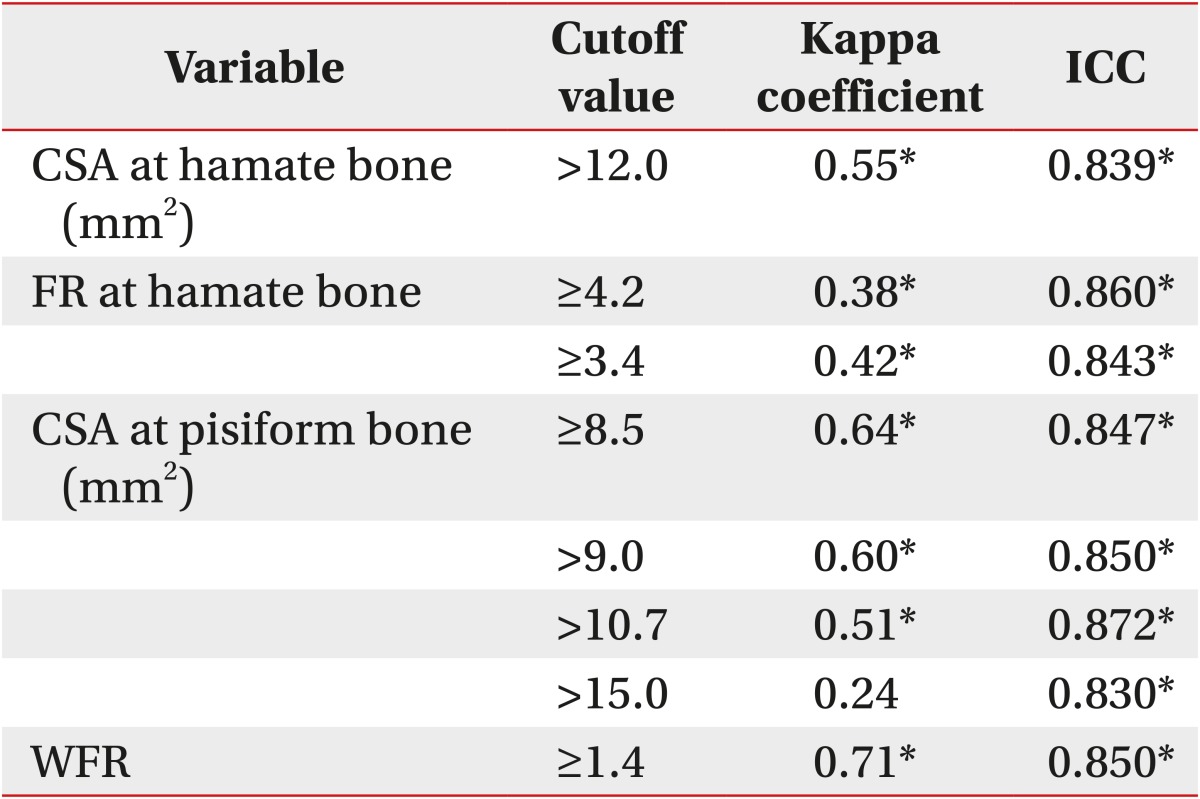
 XML Download
XML Download